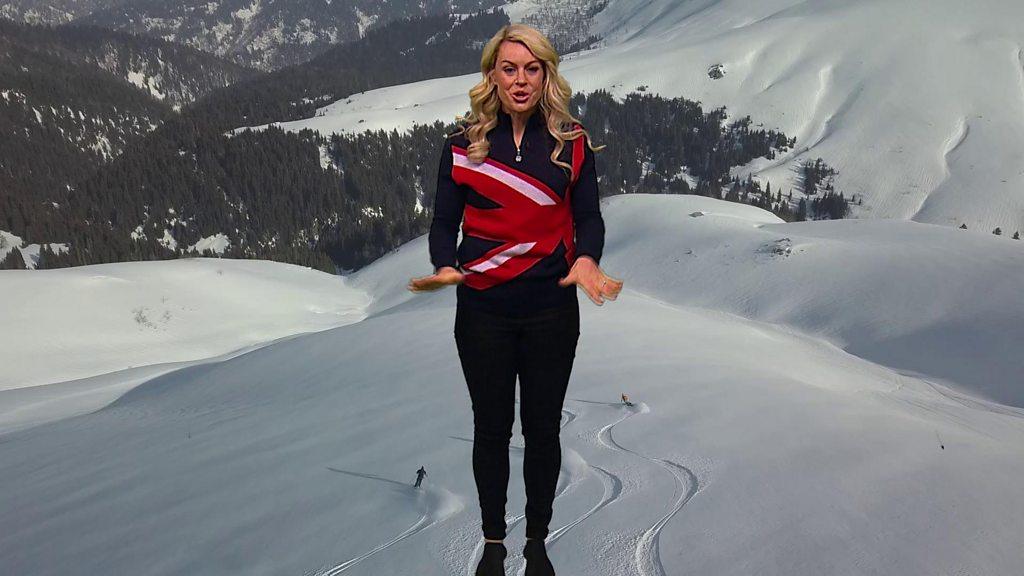UK snow: Where, when and how often does it snow ?
- Published
- comments
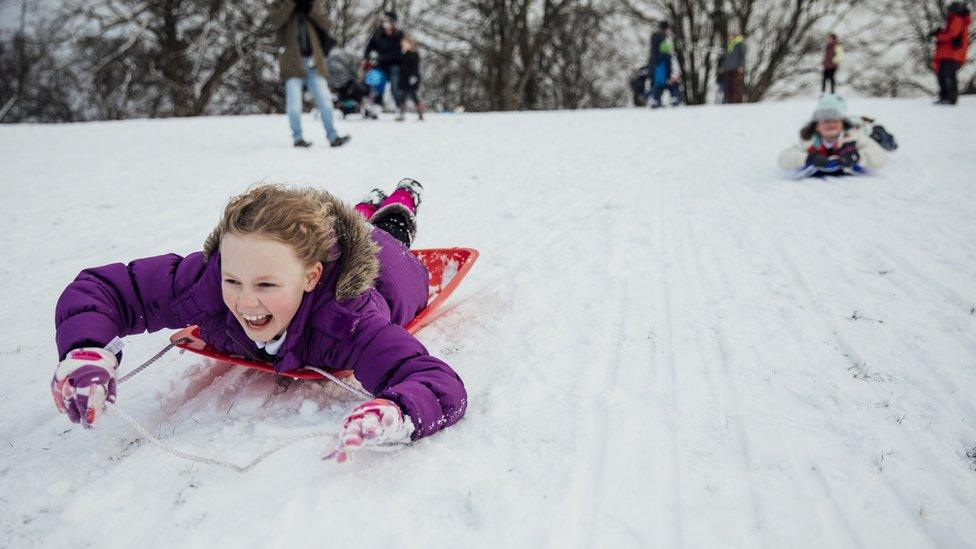
It's getting into the colder months of the year and, with winter fast approaching, the chance of snow isn't far from many people's minds.
Weather forecasters say the first chilly winter showers - some bringing sleet and snow - could be on the way.
It's as cold Arctic air arrives with temperatures expected to reach below freezing in some parts.
Many of us dream of a White Christmas, and according to the Met Office snowflakes have been recorded on Christmas Day in the UK 39 times in the last 53 years.
But where, when and how often does it snow in the UK? Let's find out more.
When does it snow in the UK ?
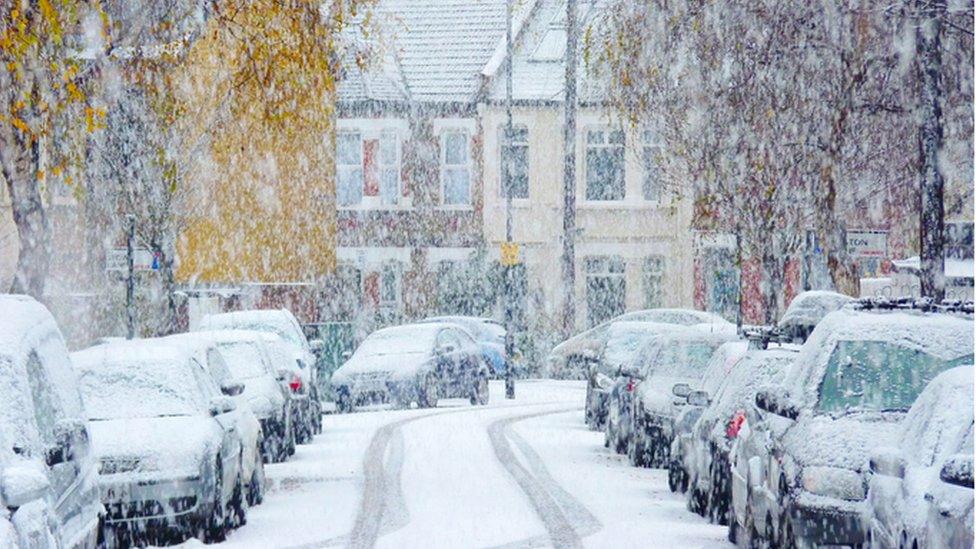
For most parts of the United Kingdom, Christmas is only at the beginning of the period when it's likely to snow.
We are much more likely to see snow between January and March than in December.
On average snow, or sleet falls 3.9 days in December, compared to 5.3 days in January, 5.6 days in February and 4.2 days in March.
Did you know that you are more likely to have a White Easter than a White Christmas?
Where in the UK are you most likely to see snow?
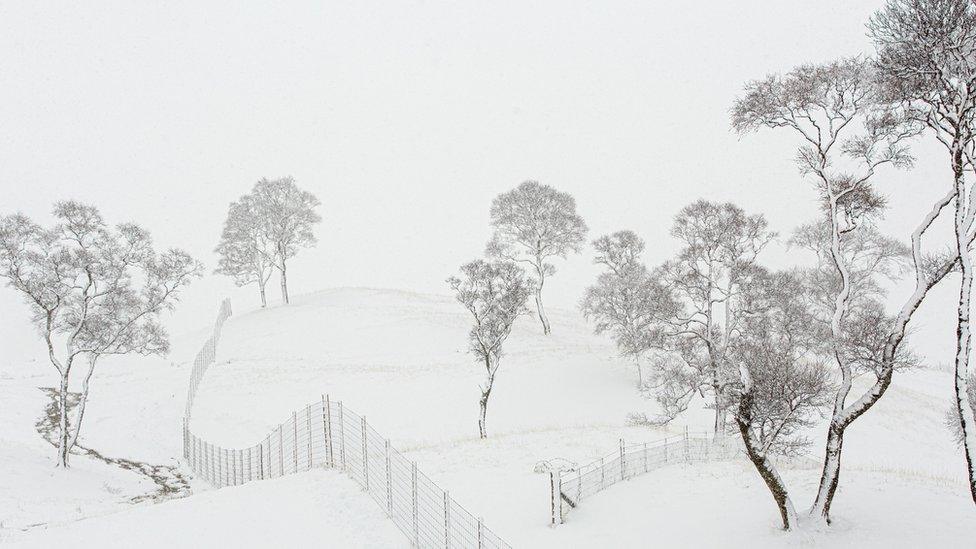
Trees under blizzard on February 24, 2020 in Cairngorms National Park, Scotland, UK
Scotland's Cairngorm National Park in the Grampian Mountains is home to some of the snowiest locations in the UK, with snow falling on 76 days throughout the year.
The small village of Leadhills in South Lanarkshire is the second highest village in Scotland at a height of 1,460 ft (450 m) and has snow on 52 days each year.
Eskdalemuir in Dumfries and Galloway sees snow falling on an average of 50 days each year, and Kinbrace - a tiny village in Sutherland in the Scottish Highlands - isn't far behind with an average 49 snowy days each year.
Four incredible facts about snowflakes!
Many of the islands that make up Shetland and Orkney also see a very high number of snow days, with around 60-64 per year.
If you're in England then heading as far north as you can is also a good bet, with the North Pennines are one of the snowiest parts of England
Copley in County Durham sees snow falling on average 53 days each year, and is home to one of only a handful of outdoor ski centres in England.
In Widdybank Fell in the heart of the North Pennines, snow falls on an average 50 days each year.
Where can you ski or snowboard in the UK?
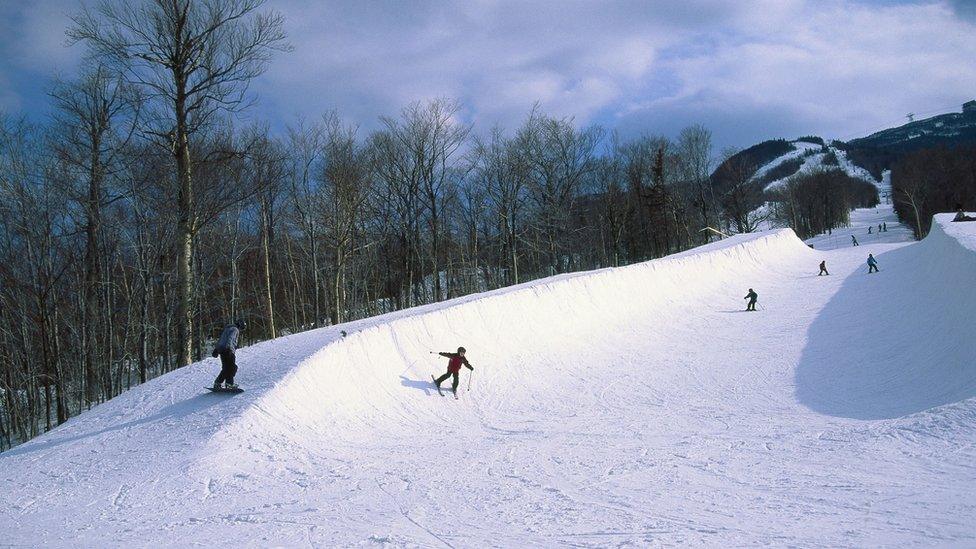
If you want to ski outdoors then Scotland is where you'll find most of the UK's outdoor slopes.
Some well known ski resorts are the Nevis Range, Glenshee, Glencoe Mountain, and Cairngorm Mountains.
There is also a ski resort in the Lake District in North West England for skiing and snowboarding, but if you live further south and fancy some snow action don't worry!
There are also lots of indoor ski slopes where you can practice your moves, including those in Manchester, Milton Keynes and Bracknell, as well as outdoor dry slopes in Llandudno in Wales.
1. It doesn't have to be freezing to snow
In most cases the air temperature will be at or below freezing for snow to fall, but if rain falls continuously through air with a temperature as high as 6 °C, it could cause the air temperature to fall low enough for the rain to turn to snow.
2. The speed of snow
Most snow falls at a speed of between 1 - 4 mph depending on the individual snowflake's mass and surface area, as well as the environment it's falling in.
3. The first snowflake picture was taken in 1885
The first person to capture a photograph of a snowflake was Wilson Bentley, a farmer from the small town of Jericho in Vermont. During his lifetime he photographed more than 5,000.
4. 'Chionophobia' means a a fear of snow
It is often thought that the fear stems from childhood events, such as a sledging accident or being hit by a snowball.
5. The Inuit language has 53 different words for snow
Recent studies suggest that the dialect spoken in Nunavik, Canada, has many more words for snow than in English. The language uses different words to describe different kinds of snow, for example 'pukak' to refer to crystal-like snow that looks like salt; 'matsaaruti' meaning wet snow to ice a sleigh's runners; and 'qanik' to refer to falling snow.
Source: The Met Office
Where is the deepest snow in England?
The deepest snow ever recorded in a UK area where people live, was in Ruthin in North Wales where a snow depth of 1.65 metres was recorded.
That's almost as tall as height of the average person!
This happened during the severe winter of 1946-47, when a series of cold spells brought large drifts of snow across the UK, causing transport problems and fuel shortages.
What is the UK's longest lasting snow?
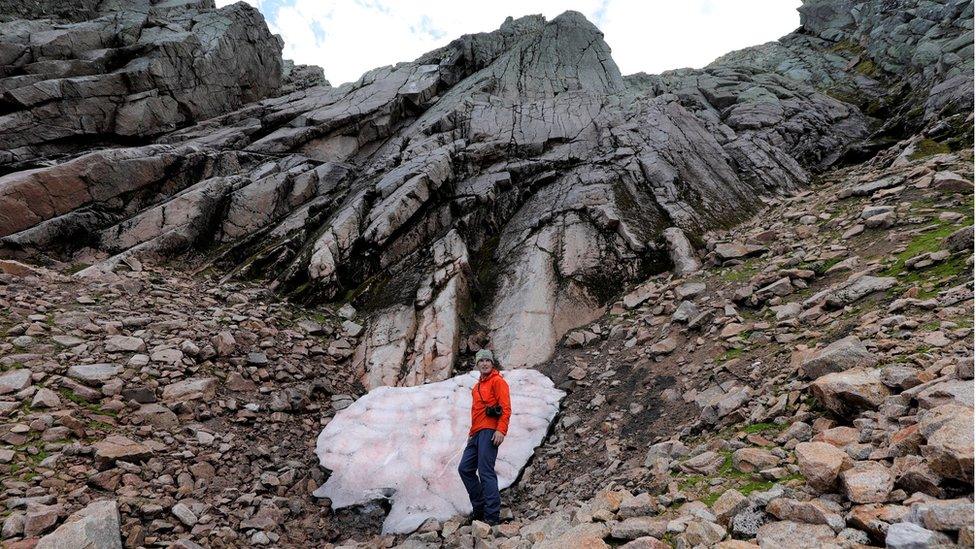
The Sphinx pictured in early October 2021 before it later melted
A snow patch known as the Sphinx is historically the UK's longest-lasting patch and it usually lies in Garbh Choire Mor, a sheltered area on Britain's third highest mountain - remote Braeriach in the Cairngorms.
The hollow, known as a coire, was formed by ice or a glacier during the last ice age. It is described as Scotland's snowiest because of the amount of snow it can hold even through summer months.
Until 100 years ago the snow patch had been considered a permanent feature of Scotland's hills but in autumn 2023 it was reported to have melted for the fifth time since 2017.
- Published22 December 2014
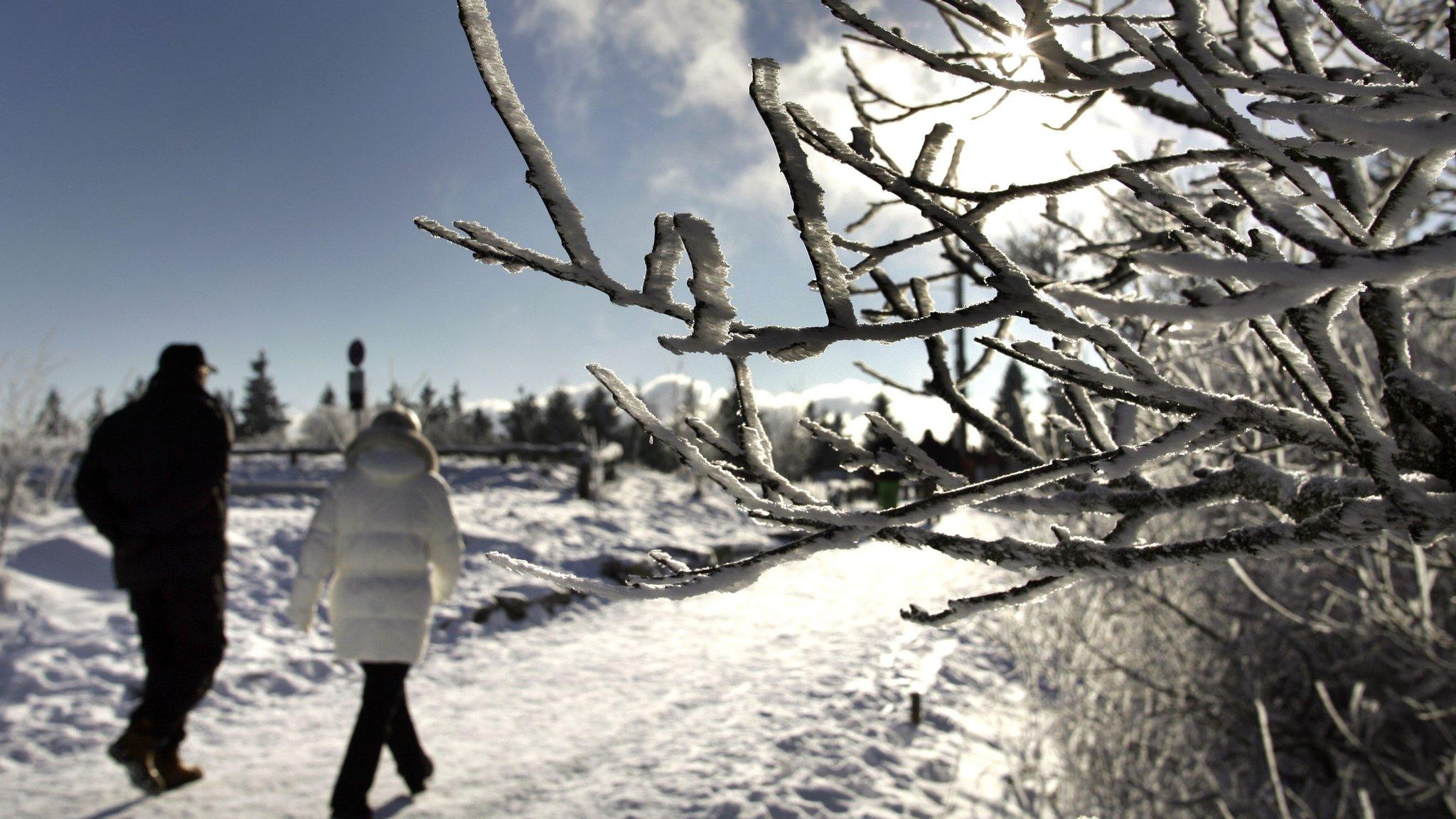
- Published23 December 2020
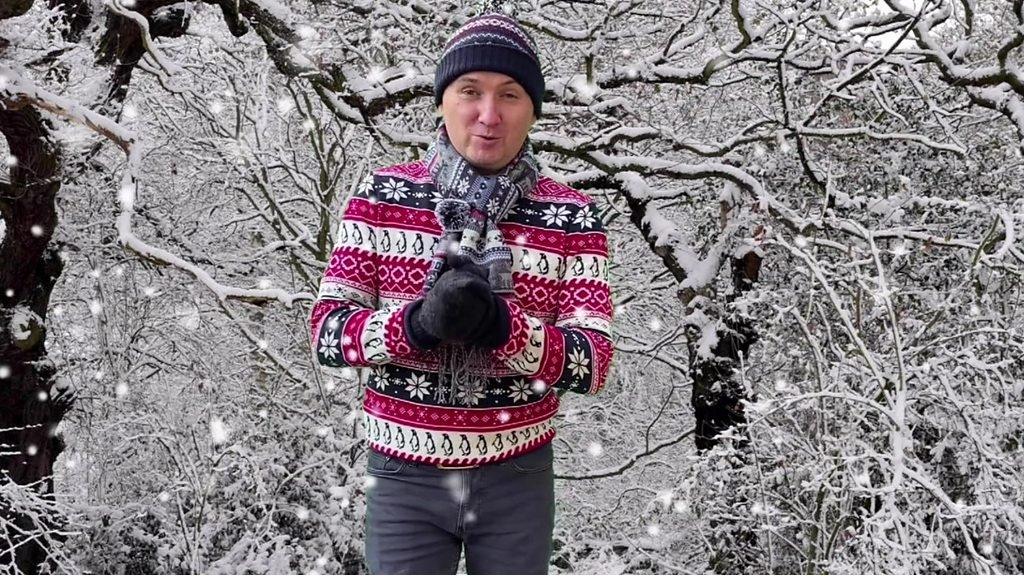
- Published27 February 2022
